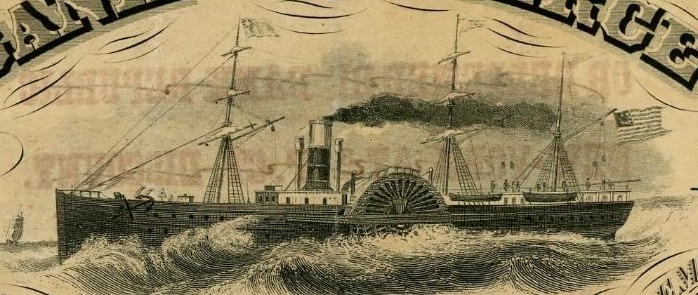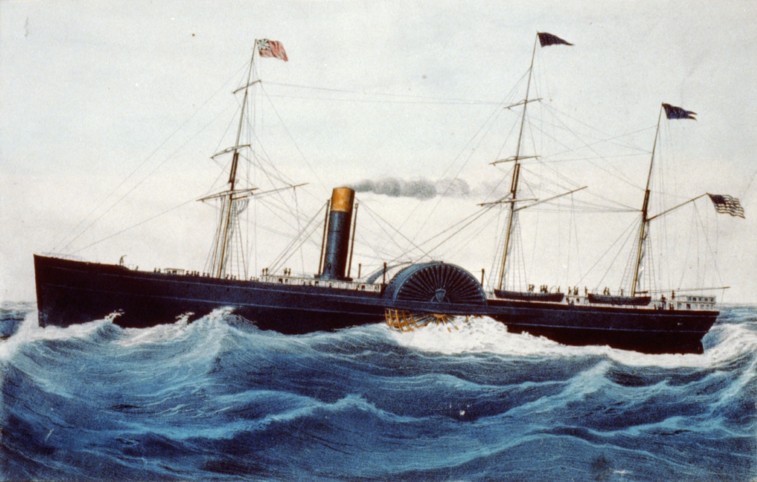Georgia 1858 $10
The Bank of Commerce, Savannah
The following obsolete banknote from the Bank of Commerce in Savannah, Georgia, dated 1858, has a lovely central vignette of a paddlewheel steamship and a side vignette of a seated Indian on the right. The State Seal of Georgia is located at the bottom, center of the banknote, flanked by the signatures of the bank’s cashier and president.
Vignettes are often not attributable to their designer, nor their specific reference. Such is the case in these two of the Indian and ship. However, I am fairly certain that, after a fair bit of sleuthing, this particular ship is modelled after the SS Baltic. The Baltic, along with the Pacific, the Atlantic and the Arctic, were a series of sister-ships that were built as cargo and passenger ships for use primarily between the United States and England. After comparing pictures of the ships, this particular design appears to have the most in common with the Baltic, especially along the prow, the sidewheel with the US Shield emblem, the flags and pennants being flown, when compared to the painting “USM steamship Baltic (1850)” by N. Currier, below. It may be that the engraver had worked from copy of the painting or a similar image to get the inspiration for this vignette. Though I’ve searched through the book “The Engraver’s Line” by Dr. Gene Hessler, one of the best available references on engravings and vignettes, I could not find reference to this vignette.
The SS Baltic was a sidewheel steamship built in 1850 for the Collins Line, a U.S. shipping company. The Baltic was one of four ships that were the largest and fastest transports at the time. The Ship was 282.5 feet long by 45 feet wide, had a single funnel and three masts rigged for additional use with sails. The top speed was 12 knots, or 13.8 miles per hour. It could travel from New York City to Liverpool, England in 9 days, 13 ½ hours. In addition to cargo, the Baltic was able to convey 200 1st class passengers, and 20 second class passengers.
After the Collins Line folded, the Ship was sold and eventually used in the Civil War as a hospital transport ship under the U.S. Sanitary Commission, A federally created civilian organization designed to aid the sick and injured soldiers and sailors of the U.S. military during the Civil War.
After the Civil War, the Baltic made a few more trips to Europe, but in 1870, the steam engines were removed and she continued working as a sailing ship until 1880, when she was scrapped.



